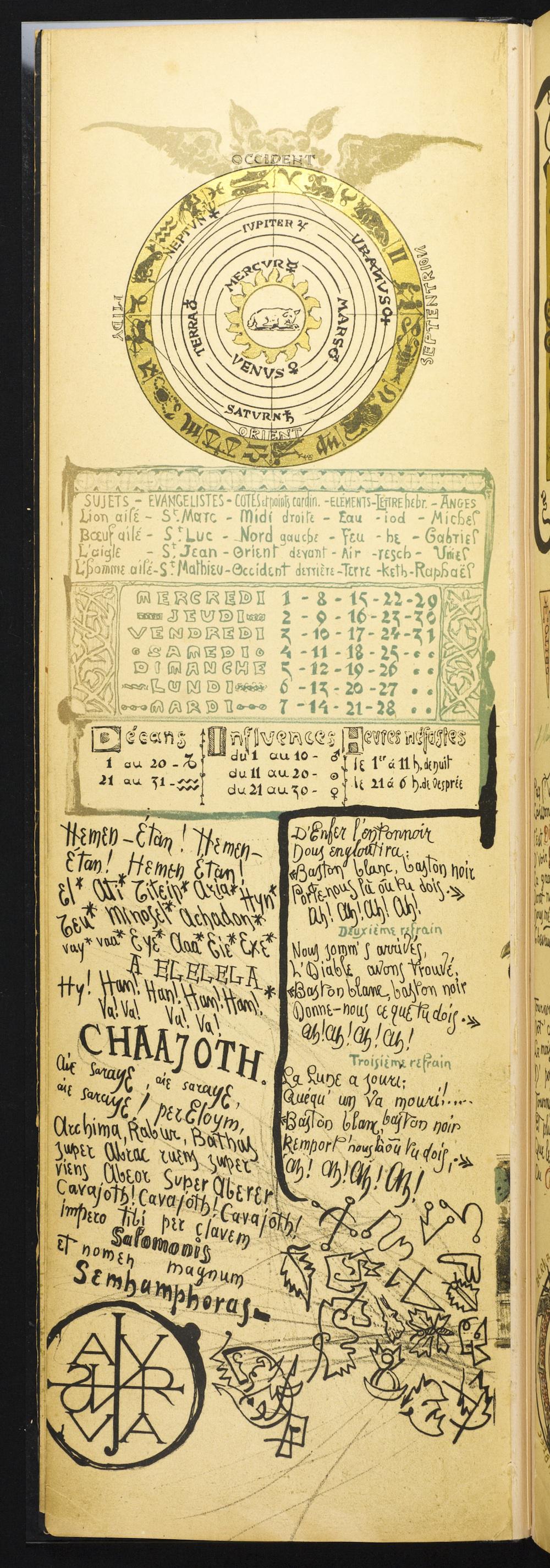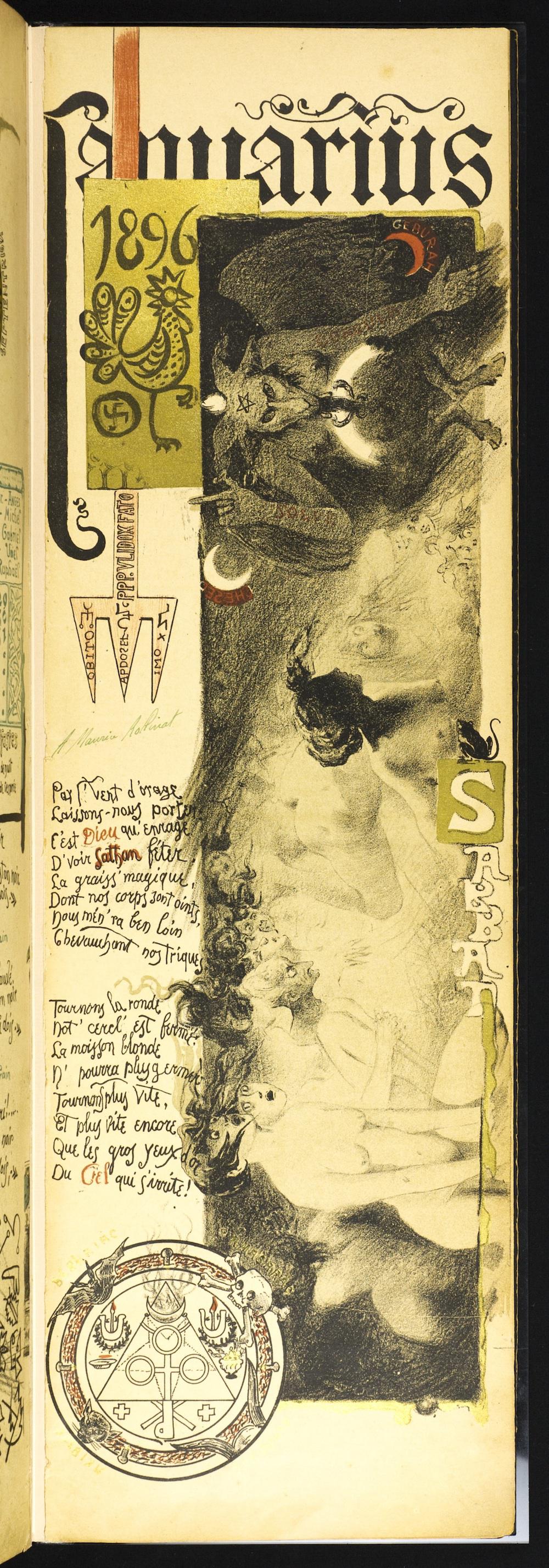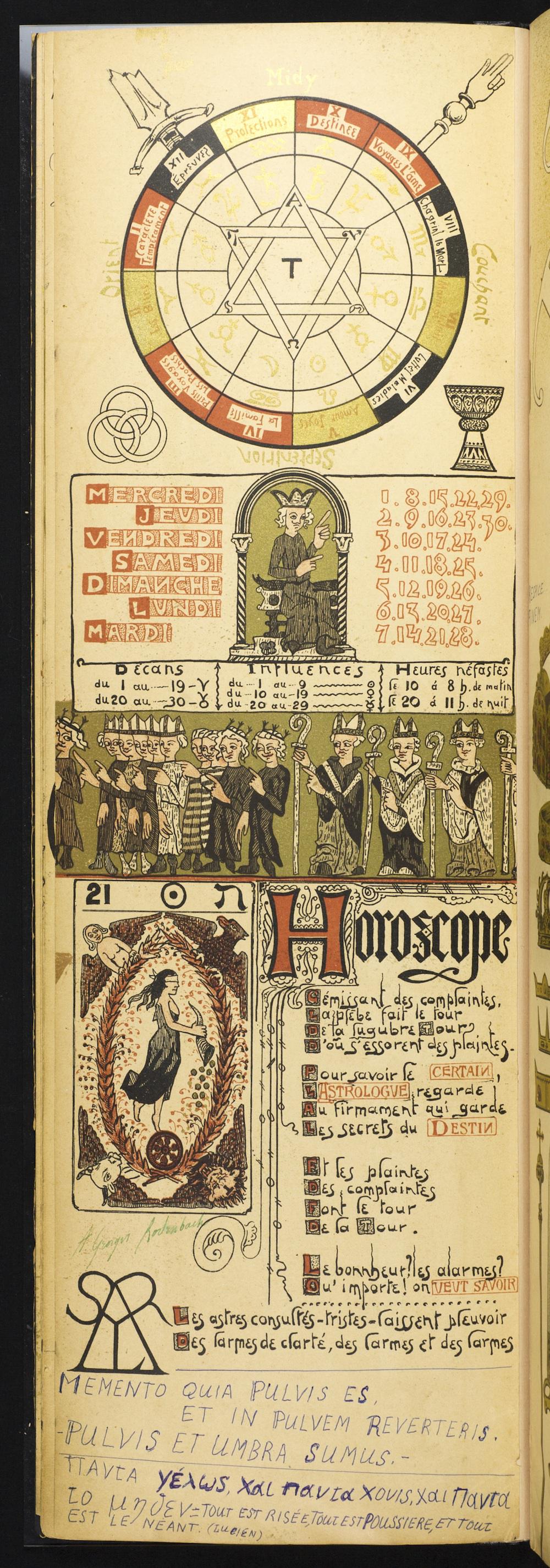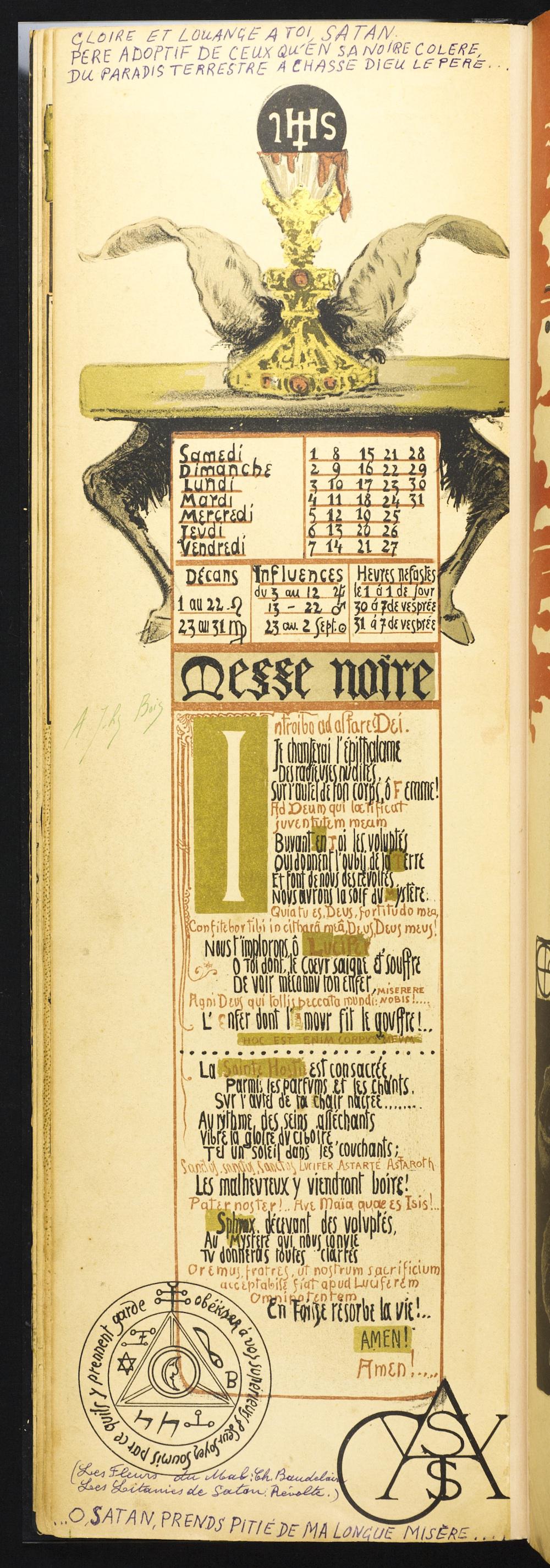The Vault is Slate’s history blog. Like us on Facebook, follow us on Twitter @slatevault, and find us on Tumblr. Find out more about what this space is all about here.
These calendar pages come from the rare book Calendrier Magique, which was printed in France in 1895 in a small run of 777 copies. The book blends Art Nouveau imagery with references to occult ceremonies, horoscopes, and tarot.
The larger images in the calendar are by Manuel Orazi, an Italian lithographer working in Paris who produced art for stage posters, books, and theatre sets. (His portrait of the actress Sarah Bernhardt, viewable here on the Art Appreciation Blog, is a thing of beauty.) The calendar is marked by the Art Nouveau illustrator’s love for the flowing, abundant, tangled look of natural objects.
Count Austin de Croze, who compiled the text for the calendar, was a folklorist who wrote on French foodways, cataloging regional specialties and traditional dishes. Did de Croze believe in the magical ideas that he collected in this calendar? Probably not. “The document is at once a spoof and an attempt to chart the year of magic,” writes the curators of Cornell’s web exhibit “The Fantastic in Art and Fiction” (where you can see all of the pages of the calendar).
“The Devil is only the symbol of Evil, as God is the symbol of Good,” de Croze writes in a signed statement on the book’s last page, lending credence to the idea that the book was meant to serve as an anthropological curiosity and a work of art, rather than a sincere handbook for occult practice.
This book is on display at Indiana University’s Lilly Library, as part of the exhibition “Spiritualists, Sorcerers, and Stage Magicians: Magic and the Supernatural at the Lilly Library,” through August 30. Click on the images below to reach larger versions.

Courtesy Lilly Library, Indiana University.

Courtesy Lilly Library, Indiana University.

Courtesy Lilly Library, Indiana University.

Courtesy Lilly Library, Indiana University.

Courtesy Lilly Library, Indiana University.

Courtesy Lilly Library, Indiana University.